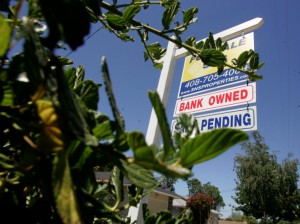December 8, 2017
Tax plan could hurt !
GOP tax plan could hurt homeowners, banks, real estate sector
I found this at www.mercurynews.com. I used to be almost exclusively in the foreclosure business. I’d much rather help people buy and sell their own homes. The article doesn’t offer anything concrete but it is certainly a warning worth paying attention to… – EA
“With all the discussion about the Republican tax reform efforts, I have yet to hear any concerns about how the increased tax on mortgage interest and property taxes might affect current property values.
The real estate industry is on board with its army of lobbyists trying to minimize the possible damage, but the emphasis seems to be the effect on homebuyers.
For retirees, who may have accumulated substantial equity in their homes, the real estate they have long since purchased is a financial underpinning of future retirement plans as a hedge against inflation and backstop against the crushing costs of assisted living and nursing home care.
My concern is how the reduced deductibility of homeownership may impact, overnight, the appraised value of residential properties — especially in places like California, where median prices drive mortgages and property taxes higher than the proposed caps offered by tax reform proposals.
People buy homes based on what they calculate they can afford in after-tax dollars. Anyone sophisticated enough to buy a home has figured out the extent to which their monthly costs, based on current tax law, will cost them in take-home pay. The maximum purchase price of their new home is pegged at what their monthly take-home pay budget will support.
It stands to reason that home prices could drop if the current tax proposals pass. The loss of value would be more severe in higher-priced homes where mortgage interest and taxes are affected by the proposed reform.
But the picture gets darker when we remember that homes are purchased largely with “other people’s money” — namely, bank financing with 10 percent or 20 percent down.
A drop in the value of Bay Area homes could erode, or possibly even wipe out many homeowners’ equity — at least on paper, and maybe for real if the owners have to sell.
This is bad for the owner, but it can be worse for the banks, collectively. It’s bad enough for the individual homeowner, but it’s bad for all of us if it affects bank solvency — again.
Home prices are said to be on an “elastic” demand curve. This means that any change in demand has a large impact on prices. By comparison, coffee has an “inelastic” demand curve because people want a cup of coffee no matter what it costs. So, if demand for homes above, say, the Bay Area median price drops to any extent, prices in this sector may drop a lot.
Meanwhile, when home equity sneezes, the banks catch a cold. We all know what that looks like, and we don’t want to go through it again. ATMs threatening to shut down in 24 hours, Hank Paulson (who was Treasury Secretary at the time) collapsing in the hall from stress the night before the second Troubled Asset Relief Program (TARP) vote, plus a host of other issues that left us peering into a financial abyss at the time. We taxpayers may not be able to cough up another $700 billion on the spur of the moment — especially if we’re on a path to increase debt by $1.5 trillion.
The last widely touted tax reform back in the ’80s wiped out the commercial real estate market at the time by doing away with the tax shelter afforded to real estate investors. In those days, people could invest in real estate limited partnerships that allowed deductions of “paper” losses against regular income while a building was owned, and years later, the building’s profit was taxed at capital gains rates.
When tax reform at the time ended the practice of turning high-tax regular income into capital gains, the industry supporting it cratered. The country was littered with empty office buildings with no cubicles — otherwise known as “see-throughs.” The savings and loan industry struggled as major lenders had to be bailed out by taxpayers and some major insurance companies like Mutual Benefit Life went bankrupt.
My point here is that tax reform offers a panoply of unintended consequences. The status quo is a known quantity, and most of us are comfortable with the way things are today.
Therefore, if proposed legislation is enacted, be prepared for a sea change that may require some course correcting in our financial planning. At the moment, I’m at a loss as to what that might look like.”


